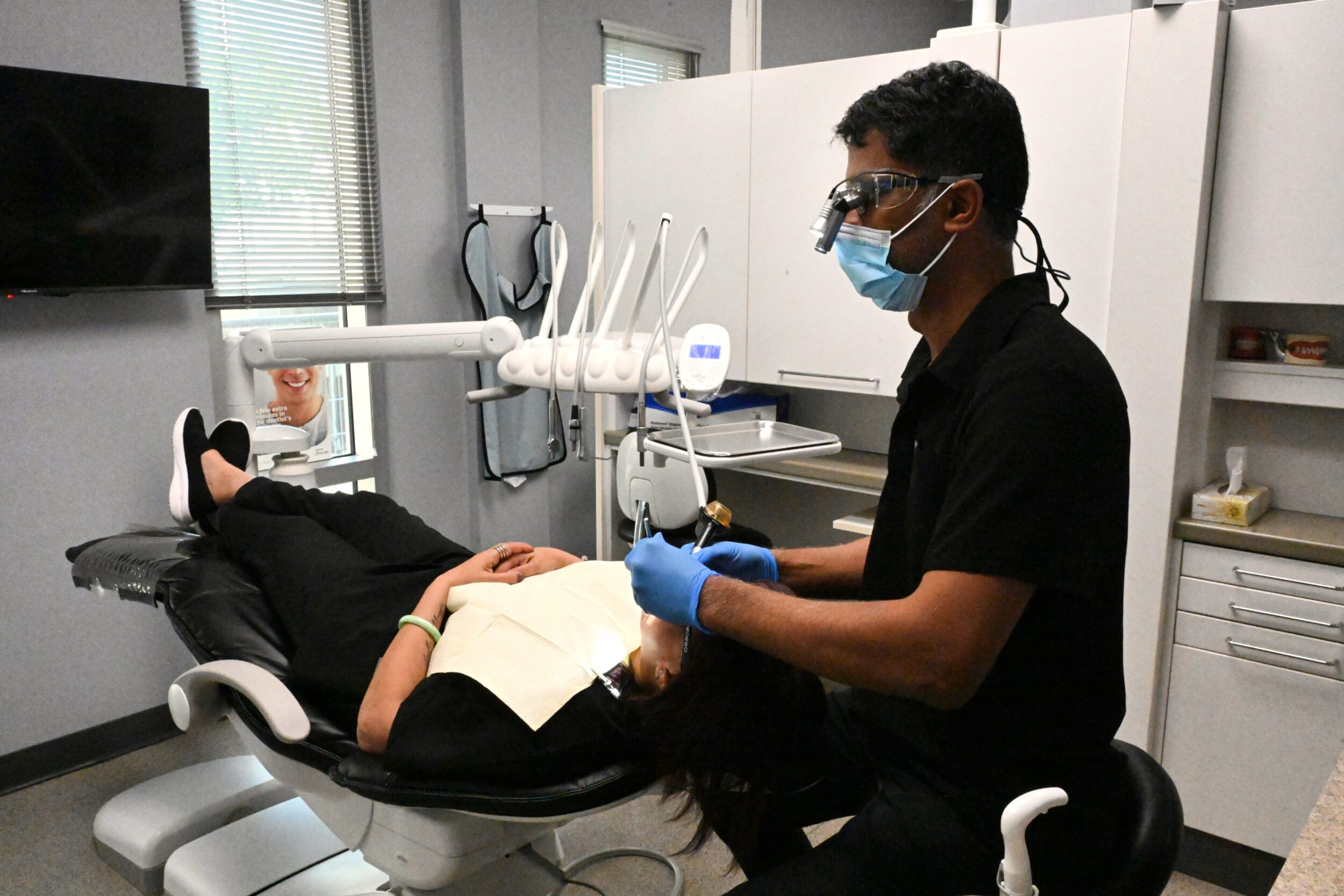What is Periodontal Gum Disease
Periodontal refers to the zone surrounding a tooth. There is a common inflammatory disease called Periodontal disease, or gum disease as it is also known. Periodontal disease affects the supporting and surrounding soft tissues of the teeth, as well as the jawbone itself when it reaches its most advanced stages.
In most cases, periodontal disease is preceded by gingivitis, which is a bacterial infection of the gums that causes irritation and inflammation. There are a number of factors which can lead to a bacterial infection of the gums, including toxins found in plaque poisoning the gum tissues and causing inflammation.

As soon as the bacterial infection colonizes in the gum pockets between the teeth, it becomes much more difficult to remove it and treat it once it has colonized. The presence of periodontal disease is a condition that progresses in such a way that eventually, the jawbone and connective tissue are destroyed. In the long run, if untreated, it is possible that the teeth can shift, become loose, and eventually cause tooth loss if left untreated.
Adults within the developed world are most likely to lose their teeth due to periodontal disease, so it is imperative that the disease is treated as quickly as possible.
Periodontal diseases and their types
It is important to understand that gingivitis (mild gum inflammation) must be treated immediately if it is to be treated effectively. Whenever the gums become inflamed due to the toxins found in the plaque, the body responds by breaking down and destroying the own bone and soft tissues as a result of this chronic inflammatory response. In the early stages of periodontal disease, there may not be any symptoms, as tooth separation occurs when the gum tissue is infected and separates from the teeth. As a result of periodontal disease, deep pockets between the gums and the teeth are generally indicators that soft tissue and bone are being destroyed at a rapid rate.
The following are some of the most common types of periodontal disease:
- Aggressive periodontitis – It is significant to note that this form of gum disease occurs in healthy individuals who are otherwise clinically healthy. There are several characteristics of this disease, including rapid loss of attachment to the gums, chronic bone destruction, and family aggregation.
- Periodontitis caused by systemic disease – It is often the case that this form of gum disease begins at an early age. The presence of health conditions such as respiratory infection, diabetes and heart disease is a common cofactor associated with this disease.
- Chronic periodontitis – An inflammation of the supporting tissues results in deep pockets and gum recession. Compared to the teeth, the gingiva (gums) appear to be receding, which makes it appear that the teeth are lengthening. A typical example of this type of periodontitis is progressive loss of attachment, which is interspersed with periods of rapid progression of the disease, which is one of the most common forms.
- Necrotizing periodontitis – The majority of people who suffer from this form of periodontal disease are suffering from systemic conditions like HIV, immunosuppression, or malnutrition, all of which can contribute to its development. Periodontal ligaments, alveolar bone, and gingival tissues are susceptible to necrosis (tissue death) when a periodontitis infection occurs.
In the case of Periodontitis, there are various treatments available
According to the condition of the teeth, gums, and jawbone, the periodontist may recommend a variety of surgical and nonsurgical treatments. The periodontist will conduct an extensive examination of the mouth before performing any treatment or recommending any treatment to the patient.
Periodontal disease can be treated in a number of different ways, including:
- Root planing and scaling – To keep gum tissue healthy, bacteria and calculus (tartar) that caused the infection must be removed. There will be a cleaning of the gum pockets as well as the application of antibiotics as necessary in order to alleviate the infection. In order to maintain good oral health, it is recommended to use a prescription mouthwash on a daily basis.
- Tissue regeneration – In cases where the bone and gum tissue have been destroyed, grafting procedures can be used to actively stimulate the regrowth of these tissues. It is possible to insert a membrane into the affected areas in order to assist in the process of regeneration.
- Pocket elimination surgery – A pocket elimination surgery (also known as flap surgery) is a surgical treatment that is used to reduce the size of the pocket between the teeth and the gums through surgical means. Another option is to have a surgery done on the jawbone in order to eliminate the indentations in the bone, which serve as a breeding ground for bacteria to colonize in.
- Dental implants – The aesthetics and functionality of a mouth can be restored when teeth are missing due to periodontal disease by implanting prosthetic teeth into the jawbone in order to restore the aesthetics and functionality of the mouth. A tissue regeneration procedure may be necessary prior to the placement of a dental implant in order to strengthen the bone before the implant is placed.
The dentist is the best person to ask about periodontal disease, periodontal treatment, or dental implants if you have any questions or concerns.